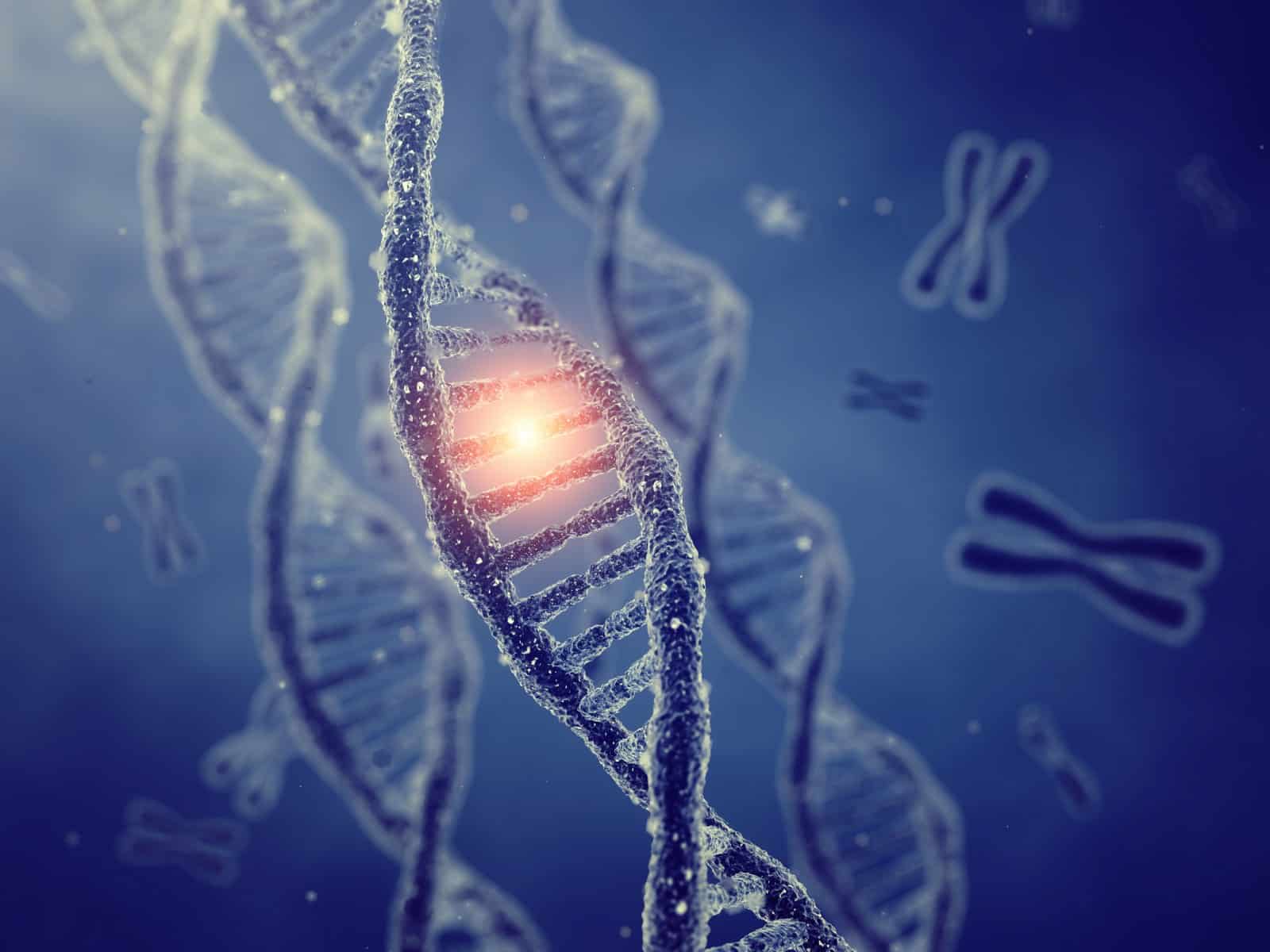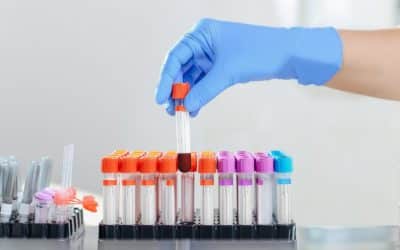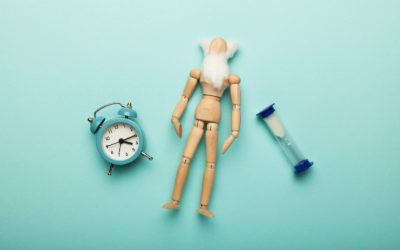
DNA gets damaged during aging.
DNA contains the instructions to build our cells, and so our body.
Consider the DNA as an instruction manual for how to build a human.
DNA contains the code for making thousands of different proteins, which build up our cells and carry out most of the functions of our cells.
The DNA found in most of our cells consists of 3 billion base pairs (“letters”). Each base pair is a small molecule that can be adenine (A), cytosine (C), guanine (G), and thymine (T). The arrangement of these As, Cs, Gs and Ts determines which kinds of proteins are made.
DNA damage and aging
Unfortunately, during aging our DNA becomes more and more damaged. There are many ways in which our DNA can get damaged:
- Chemicals, free radicals, toxins, UV radiation, metabolites and other substances damage our DNA.
- Each time when DNA is replicated (during cell division) some errors (mutations) happen given the process of replication is accurate but not perfect. Over time, more and more mutations accumulate in the DNA.
- Rogue DNA sequences (which stem from ancient viruses) found in our DNA can make copies of themselves and insert themselves randomly in our DNA, disrupting the normal sequence of our DNA. Other DNA sequences don’t make copies of themselves, but just cut themselves out of our DNA and insert themselves in another region in the DNA strand, also disrupting our DNA. In fact, 40% of our DNA is from viral origin, created by viruses that inserted their DNA in the DNA of our forebears during (hundreds of) millions of years. Most of this viral DNA is inactive, but some parts can jump around in our DNA (these rogue DNA sequences are called “transposons”).
As the decades pass, our DNA becomes more damaged. Our cells have intricate mechanisms to repair most of this damage, but these mechanisms are not perfect, so damage leaks through.
Damaged DNA leads to the cells functioning less properly.
Damage (or mutations) in regions of the DNA that encode for important proteins can make that these proteins are not properly produced or are malformed. This can lead to serious problems, such as cancer. DNA damage can result in more active proteins that can increase the risk of cancer, such as growth factors.
DNA damage can lead to malfunctioning proteins which normally would suppress cancer.
Other DNA damage leads to healthy proteins becoming malformed and not being able to perform their function properly.
Damaged DNA also activates all kinds of DNA-damage responses in cells, which can further worsen cellular functioning.
Does DNA damage really play a role in aging?
However, there is discussion whether DNA damage really is an important driver of aging.
For example, some types of old cells do not have that many DNA mutations (R,R). So despite having little DNA damage, they are still old, hinting that other processes could be involved.
Also, mice or people with higher DNA mutation rates do not necessarily age faster or prematurely (R,R).
And young, newborn animals can be cloned from old, mutated somatic cells (R). This is quite remarkable. Cloning consists of removing the nucleus (containing the DNA) of a cell and putting the nucleus into an egg cell of which the cell nucleus has been removed. From this egg cell then grows a new, young animal. In other words, when the old nucleus of an old cell of an old animal is taken, this nucleus contains DNA with aging-related mutations. However, when this old, mutation-loaded nucleus is put into an egg cell (from which the cell nucleus has been removed), a new, young organism grows from this egg cell.
Of course, if you mutate the DNA a lot (like via strong ionizing radiation, or very toxic chemicals), then an organism will age faster and die early. But such a high, sudden mutation burden is not really what happens during aging. During aging, the DNA in our cells mutates more gradually, and the question is whether these mutations really play a significant role in aging.
Nonetheless, some people still believe that DNA mutations do play an important role in aging. They often refer to “accelerated aging diseases”, in which people seem to age much faster. In a lot of those diseases, DNA damage is the main cause.
A well-known example of such a disease is Hutchinson-Gilford disease, also called progeria. In this disease, children age very quickly, about seven times faster than normally. When they are 12 years old, they look like an 80-year-old person, with frail, pale, thin skin, a bald skull, a sharp, pointed nose, sunken eyes, and thin arms and legs (due to loss of muscle mass). Often these children do not become older than 12 or 13 years. They look like this because they suffer from severe DNA damage.
Specific proteins that make up the scaffolding of their cell nucleus (which form the “beams” supporting the cell nucleus which stores the DNA) are made in the wrong way, leading to the walls of the nucleus being severely weakened, damaging the DNA inside, and leading to massive cell death.
Given these children age so quickly due to severe DNA damage, proponents claim that DNA damage must play an important role in aging. However, Hutchinson-Gilford disease (“progeria”) is not really the same as aging. For example, children with progeria do not get other, typical aging-related diseases and symptoms, like Alzheimer’s disease or dementia, vision loss, hearing loss, increased blood lipids, deterioration of the immune system, cataracts, and so on.
So what happens in progeria patients does not entirely recapitulate the “real” aging process. Despite having different causes, normal aging and progeria do share quite similar outcomes: during normal aging many cells die off or are not replaced (due to the aging mechanisms I discussed earlier) making our skin thin, our muscles dwindle away, our bones becoming brittle, and so on. In progeria, also many types of cells die off (due to severe DNA damage); but given this happens due to other causes it’s not really the same as normal aging.
However, DNA damage could still play an important role in aging. But more indirectly. It could be that DNA damage causes epigenetic disruption, which then leads to aging (as we discussed earlier, a dysregulated epigenome is one of the causes of aging).
Professor David Sinclair from Harvard University championed this idea. He believes that specific kinds of DNA damage, especially double-strand breaks, lead to epigenetic disturbances.
This is because damaged DNA needs to be unwinded in order to repair the damage, which changes the epigenomic configuration of the DNA (how it’s folded). Additionally, various proteins that repair the DNA are also needed to maintain the epigenome, which is thus less preserved (R). This dysregulated epigenome then leads to aging.
I explain more about the epigenome and aging here.
Learn more about the hallmarks of aging:
Epigenetic alterations
Loss of proteostasis
Mitochondrial dysfunction
Genomic instability
Telomere attrition & shortening
Advanced Glycation End Products (AGEs) and protein modifications
Senescent cells
Stem cell exhaustion
Altered intercellular communication
Deregulated nutrient sensing
Other reasons why we age
Overview of the hallmarks of aging




